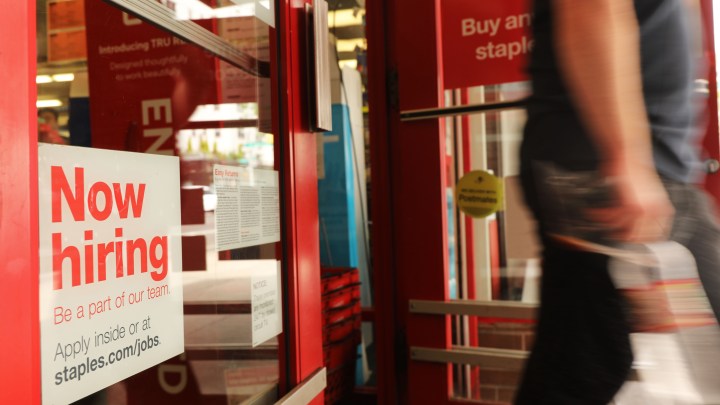
What the number of involuntary part-time workers tells us about the economy
What the number of involuntary part-time workers tells us about the economy

Last week, the monthly jobs report from the Bureau of Labor Statistics showed a slight uptick in the unemployment rate, that 315,000 jobs had been added to the economy and that wage growth slowed a bit. Those are all signs that the hot labor market that’s frustrated the Federal Reserve might be starting to calm down.
The jobs report is always jam-packed with data, so here’s something we couldn’t get to last week: “involuntary part-time workers” aka “people who are “employed part-time for economic reasons” aka “I’d prefer a full-time gig, but I can’t find one.” In August, just over 4 million Americans fit into that category.
When we want to take the labor market’s pulse, we often look at the overall unemployment rate. But that number doesn’t tell us everything.
“Any one measure has to be rather crude, right?” said Cornell economist Erica Groshen, who used to run the Bureau of Labor Statistics. “The unemployment rate counts everybody who worked at least one hour during the reference week as being employed.”
Even if those people would rather have worked a full 40 hours, but were prevented from doing so “by either the employer’s inability to give them the normal amount of hours or their own inability to find a job that was full time,” Groshen added.
The measure of involuntary part-time employment gives us a sense of how much slack or unmet potential is in the labor market, per Elise Gould, senior economist with the Economic Policy Institute.
“When that number is lower” — like it’s been in the last couple of years — “it means that there are more opportunities and fewer people are scrambling to get additional hours,” Gould said.
That’s good news for workers, who have lots of options and additional leverage vis-a-vis employers, Gould said.
For some companies, it’s a sign that staffing up for the holidays won’t be easy, said Daniel Zhao, lead economist at the hiring site Glassdoor.
“There are lots of jobs that go into supporting the annual holiday season, whether that’s retail workers or truck drivers or warehouse workers,” he said.
Last year, almost 1 million seasonal and often part-time positions opened up ahead of the holidays. This year, “we should continue to expect it to remain very difficult to hire these roles,” Zhao said.
If involuntary part-time employment does start to tick up, Zhao said, it would be a leading indicator of a slowing economy.
There’s a lot happening in the world. Through it all, Marketplace is here for you.
You rely on Marketplace to break down the world’s events and tell you how it affects you in a fact-based, approachable way. We rely on your financial support to keep making that possible.
Your donation today powers the independent journalism that you rely on. For just $5/month, you can help sustain Marketplace so we can keep reporting on the things that matter to you.











